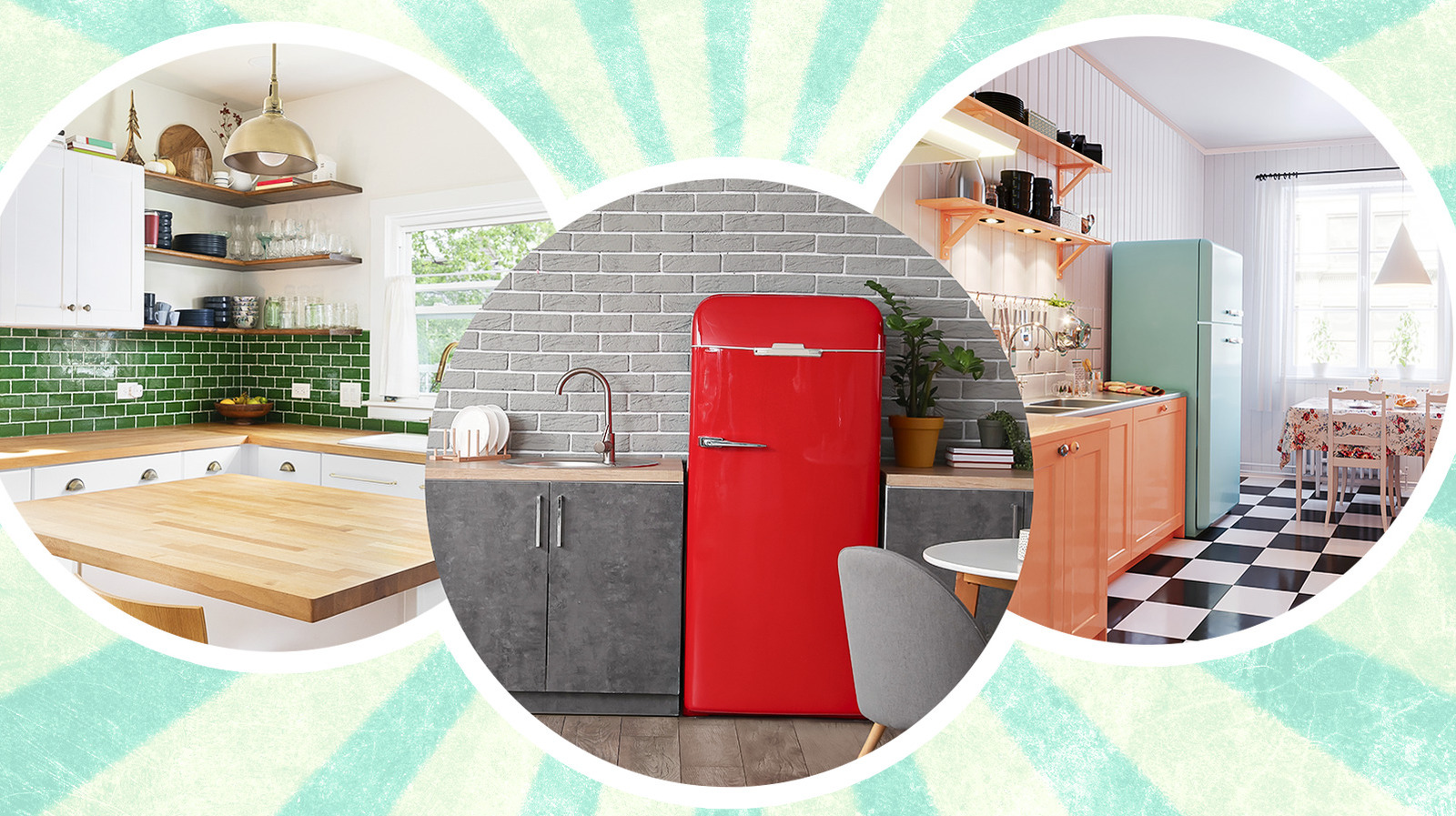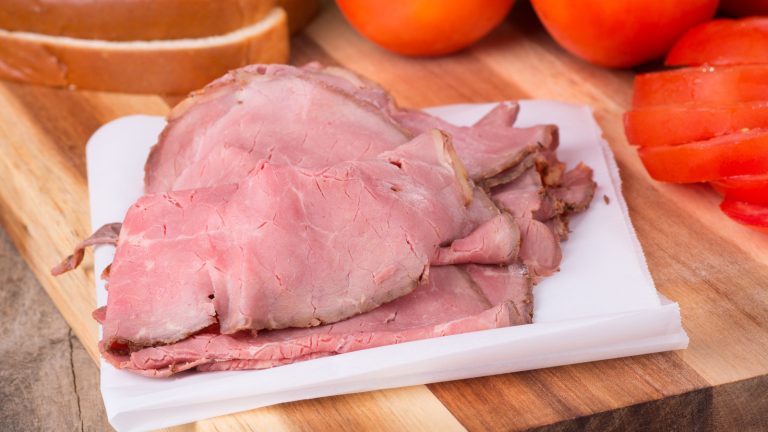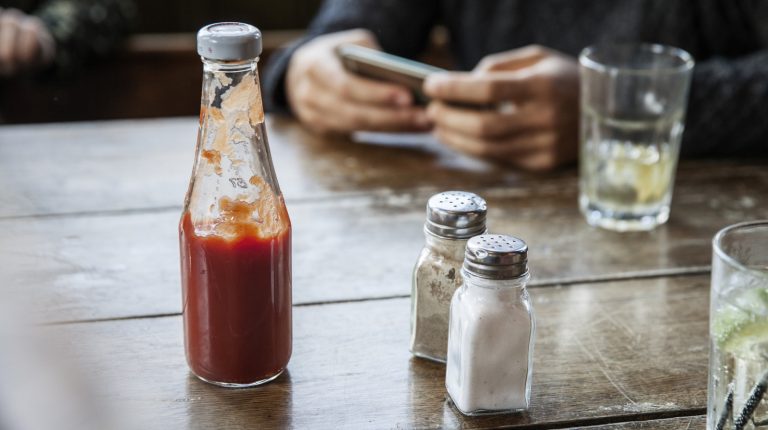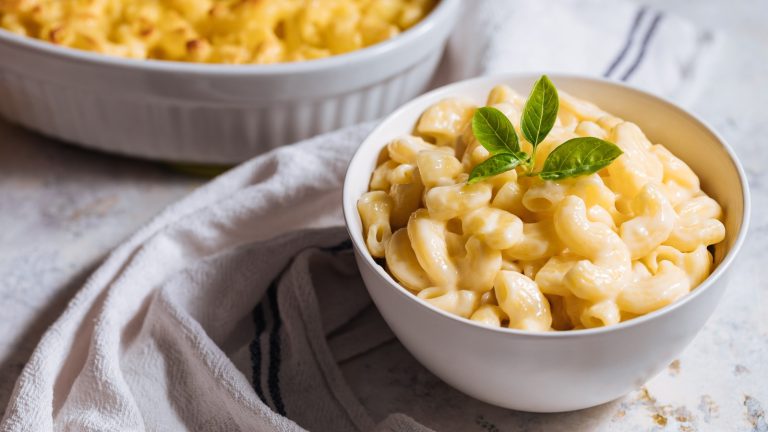Designing the retro kitchen of your dreams is easier than ever, but what about those modern conveniences that have been calling your name? If you find yourself stymied between the timeless appeal of a vintage kitchen and the functionality that a modern kitchen has to offer, you can take heart in the fact that you don’t have to make a binary choice anymore.
Within the ever-evolving world of kitchen design, rustic elements are dancing a merry tango with contemporary conveniences and appliances. So, how do you bring these diverse sensibilities together without ending up with a mishmash of styles and eras? We looked to Surjit Singh Namli, founder and creative director of Artique Designs, for answers. With a strategic approach, he believes that it is possible to lay down a modern foundation of colors and cabinetry that can then be decked with ageless finishing touches, such as vintage furnishings. The end result? Curating a space that feels like it has been painstakingly assembled over time, rather than being robotically replicated from a catalog. Here’s how you can get started.
Look for design inspiration
Attempting to mix together modern and vintage elements can be a daunting task — you don’t want to overdo one at the expense of the other. Not quite sure to begin? The best kitchens are designed with a cohesive vision, and you may want to look beyond the usual suspects for inspiration.
For vintage design ideas, Surjit Singh Namli likes to draw upon his previous travels as well as flea markets for an element of authenticity that goes beyond cookie-cutter design. “For modern ideas, I look to human behavior,” he says. From the way we move, store, and cook to how we connect in our kitchens today, these aspects can afford crucial clues on the modern conveniences that your kitchen needs. “It’s not about trends; it’s about tuning into how the space should feel and flow,” he muses.
Once you have compiled a mood board of all design ideas and elements that you’d like to include in your dream vintage-meets-modern kitchen, you can then prioritize the elements and functionalities that can actually be executed according to your budget and capabilities. For those looking to take the guesswork out of the equation, there are several online kitchen design tools that can help you visualize the final look before you make a commitment. Free apps and online resources, such as Room Sketcher and IKEA Kitchen Planner, require no design experience.
Start with a modern backbone and layer in vintage elements
When attempting to mix modern and vintage elements together, it can seem tempting to work within an established framework, such as the 80-20 rule that is popular in interior design. Put simply, it dictates that one dominant style should monopolize 80% of the room with a contrasting style for the remaining 20% to create a unified, cohesive look.
However, Surjit Singh Namli believes that instead of working by ratios, it helps to lend a keen ear to your kitchen and its needs. “Kitchens are working spaces — they need to function first,” he states. This means working with a modern backbone by opting for structured and well-organized cabinetry as well as smart appliances that are up to date with the latest technology.
Once the skeleton is formed, he believes that it helps to layer vintage elements that can add charm to the space. “One heirloom cabinet, a reclaimed island, or even a set of antique knobs can bring in the warmth and texture that makes a space feel lived-in and loved,” he says. From shelving to the cabinet inserts, there are endless ways to work in vintage touches — even getting creative with your choice of backsplash tiles can add vintage charm to the space.
Use neutral colors
With a dual design memo of marrying together vintage elements with a modern vibe, your choice of color is paramount in setting the stage for a harmonious union. To ensure that your kitchen design doesn’t devolve into a tug-of-war between clashing design styles, Surjit Singh Namli recommends opting for a palette of warm neutrals to set the tone.
In his experience, soothing hues such as bone, putty, or oatmeal can serve as a worthy dance partner for vintage materials. “Deep forest greens, rust, and navy can anchor a space and give it depth. I like to use these in smaller doses — perhaps in a painted vintage stool, a patterned backsplash, or even an accent door — so the space remains fresh and light while still feeling grounded,” he advises.
If you like to play by numbers, the 60-30-10 rule can help. A long-established principle within the world of interior design, this rule lays out helpful parameters when attempting to bring together several different colors in a room. Start by utilizing 60% of one color for the majority of the room, such as the cabinetry, and contrast it with 30% of a supporting hue for the countertops or the backsplash. The fun comes with your choice of an accent color for the remaining 10% of the space to give the space an element of interest in the hardware and other decorative details.
Let modern technology do the heavy-lifting
There is a certain charm to vintage design that its contemporary counterpart simply cannot compete with. But when it comes to technology, you will want to make your daily cooking rituals smoother by leaning heavily on the latest and the greatest to offer.
Surjit Singh Namli agrees that technology shouldn’t be placed on the back-burner when designing the kitchen of your dreams — induction cooktops, built-in coffee systems, and smart ovens are topping his list of priorities. However, you can also choose to sneak in a few vintage-style pieces, like a retro-style SMEG fridge or an old-fashioned toaster, that can deliver the performance that you are accustomed to from modern gadgets. Traditional range cookers are also making a comeback and are favored for adding a cozy, farmhouse vibe to modern kitchens. You can choose to make yours the focal point of the room or flank it by drawers in a coordinated hue.
Playing around with several different styles when shopping for appliances is crucial, because attempting to heavily coordinate all appliances within a specific color or brand is a common kitchen design faux pas that actually doesn’t matter at all. Not quite sure how to add vintage appliances to the mix without having them stand out like a sore thumb? Singh Namli believes that the key lies in clever framing. “Nestle them into cabinetry or surround them with tactile finishes, like wood or brass, so the contrast feels intentional,” he advises.
Bring together modern and vintage elements on the countertops
Once you have chosen your kitchen’s colors, it is time to zero in on certain elements that can make or break the final look of the space. The countertop witnesses most of the heavy traffic in a kitchen, and when attempting to combine different styles in this crucial area, you will need to ensure that your design vision isn’t compromising on functionality.
Your work starts with choosing the right material. Surjit Singh Namli is partial towards natural stone with imperfections, such as marble with visible veining or soapstone with a soft patina. If you are opting for the former, it helps to know that marble countertops require special care when cooking. You’ll need to avoid having any acidic elements, such as lemon or vinegar, touching the surface and food spills will need to be mopped up quickly. While soapstone is a durable kitchen companion, it will require a monthly oiling regimen to keep stains at bay.
Or perhaps you’d prefer leaning into the retro memo for your countertops? While bold colors such as cherry red and mustard will make a statement, terrazzo will also fit the bill. Once you have finalized the canvas, Singh Namli recommends adding in vintage accessories to complete the look, such as a copper pot rack, ceramic jars, or hand-turned wooden bowls. “The countertop becomes a conversation between clean functionality and lived-in character,” he says.
Get creative with lighting
Once the stage is all set with the foundational elements of the kitchen, your focus will need to turn to the lighting. Beyond serving an aesthetic purpose, lighting is crucial to ensure optimal visibility for tasks such as chopping and cooking. The good news is that modern and vintage elements needn’t rest in disconnected silos. Surjit Singh Namli believes that it is possible to merge both styles together by opting for strategic layering. “A sleek modern pendant over the island can co-exist with vintage sconces or a refurbished chandelier near the breakfast nook,” he says.
If you have been planning a larger kitchen remodel, you can opt for recessed ceiling lights for enhancing the overall illumination of the room. This can then be paired with vintage finishing touches. Intricate Tiffany lamps are also seeing a resurgence in interest — spurred on by TikTok’s unrelenting fixation with nostalgia-inducing design — and can be tucked away on a corner of the island or countertop that is out of the range of food splatters.
When bringing such diverse styles together, Singh Namli believes that it is crucial to maintain a unified approach to the palette. He recommends opting for all fixtures in aged bronze or antique gold, while allowing the silhouettes to vary. “It’s that tension between old and new that creates warmth,” he says.
Opt for decor with history
In the fast-revolving carousel of trends, vintage decor stands tall and proud by infusing timeless appeal into a space. Beyond aesthetic appeal, vintage decor finds can also serve as a conversation starter — the precise story behind how you uncovered a butcher block. Surjit Singh Namli also finds himself drawn towards objects with a story — this can range from cast-iron pans, glass cake stands, and enamelware to handwoven textiles. “But often, the best pieces are inherited. A grandmother’s spice box or a chipped bowl from childhood can become the soul of the kitchen,” he observes.
When searching for vintage accents to balance the onslaught of modern appliances that a kitchen requires, you can choose to start out small: a vintage caddy or cake display stand here, a distressed wall hook there. When you feel ready to move on to larger silhouettes, you can explore antique wall clocks or open shelving with iron brackets. Style the latter with an assortment of your favorite flea market finds, from handcrafted ceramic dishes to baroque planters, to round out the look.
If you are up for a challenge, the fiercely competitive world of vintage cookbook collecting beckons. Getting your hands on a limited copy makes for an adrenaline rush, but you’ll also discover a wide world of possibilities for styling your new finds. Stack them up around a thoughtfully curated assortment of decorative objects on open shelving or keep a prized copy open on a stand to spark intrigue and start conversations.
Add personality to the walls with vintage elements
Countertops and cabinets often command main character energy when planning a kitchen remodel. Any blank stretches of wall, meanwhile, can play host to a motley crew of hooks as an afterthought. If you are looking to get more intentional with how you utilize every inch of your kitchen, the walls serve as a golden chance to infuse your personality into the space.
Wallpaper can transform your blank walls into an imaginative playground, especially if you are armed with this guide on how to add wallpaper to your kitchen. But your choices don’t end there. “A vintage signboard or an antique mirror can instantly add personality. For modern contrast, I might include open shelving in powder-coated steel or a subtle microcement finish,” Surjit Singh Namli says.
If you are feeling particularly artsy, gallery-style picture walls have also earned his nod for merging different eras together. So, what can you hang up in this space? Your choices include everything from old botanical prints to family recipes for a touch of nostalgia. Creating visual cohesion is key here, and it helps to use the largest artwork as the central point. From there on, you can create a cluster of differently sized frames. As a rule of thumb, it is recommended to leave a gap of 3 centimeters between each frame to avoid creating visual overwhelm.
Leverage vintage storage options
If farmhouse sinks and checkerboard flooring is all that comes to your mind when you think of vintage design, you may want to broaden your horizons. There is a wide world of vintage design elements waiting to burrow into your kitchen — and this includes vintage storage options.
Yes, there is a kitchen tool organizer for every need, but you’ll find that thrifting for vintage storage options is not just sustainable, but also an easy way to bring some historical charm to the table. “Old apothecary cabinets, wooden crates, or free-standing hutches can become soulful pantry spaces,” Surjit Singh Namli notes. He believes that these pieces don’t just add crucial storage inches in a cramped kitchen, but also infuse history into the space. “Mix them with handle-less drawers or sleek pull-out shelves behind the scenes to maintain modern utility,” he advises.
When choosing antique cabinets for the kitchen, it helps to bear in mind that even the most carefully preserved finds can show some signs of wear and tear — however, this only adds to the charm. Vintage furniture is highly prized for its craftsmanship, so you’ll want to keep an eye out for carvings and intricate inlays when choosing yours. Once you have found the perfect option, you can opt for vintage metal tins and apothecary jars for storing spices, tea bags, and other essentials.
Add charm with vintage seating options
Kitchens are no longer just a space to get chopping and cooking done. As the heart of the home, it is the place where you will spend memorable meals with loved ones. If you can afford the space, you’ll want to increase your kitchen’s potential as a hub for social entertainment with seating options that extend beyond a bunch of bar stools clustered awkwardly around the island.
When chosen strategically, the right seating options can bring together an effortless meeting of the minds between modern and vintage design sensibilities. But instead of opting for banquette seating in a vibrant hue, Surjit Singh Namli urges you to consider soft grays, ochres, and sage greens that can add a lived-in feel to the space. Warm woods, rattan, and worn leather are welcoming textures that invite your friends to linger a little bit longer as you put the finishing touches to dinner. “Think bentwood chairs, farmhouse stools, or even re-upholstered mid-century armchairs if space allows,” he adds.
Flea markets, antique shops, and estate sales are worthy places to discover hidden gems, such as Victorian chairs. Ensuring the structural integrity is key, but you’ll want to overlook stains and blemishes to visualize the potential of an antique piece. With a change in upholstery and a fresh layer of paint, does it fit within the ambiance of your kitchen? If the shape of the chair works for you, the remainder can be upgraded as needed.
Don’t exclude modern conveniences
When envisioning the perfect mélange of vintage and modern elements in your kitchen, you won’t want to sleep on the everyday conveniences that modern technology has to offer. After all, fashion needs to be balanced with form and functionality to ensure that your kitchen works for you, rather than the other way around.
According to Surjit Singh Namli, features such as touchless faucets, integrated dishwashers, and discreet charging stations are a must-have in every kitchen to make your daily routines smoother. “To blend these into a vintage design, I use panel-ready appliances, custom wood facades, or finishes like unlacquered brass that age gracefully alongside antiques,” he explains.
The easiest way to nail the best-of-both-worlds memo is to list the modern conveniences that would make life easier in the kitchen and then integrate these within vintage kitchen staples. Beadboard cabinets, popular in the Victorian era, can be sneakily upgraded to house everything from built-in coffee stations to integrated appliance lifts for maximizing functionality within limited space. A hutch with a weathered wood finish can add oodles of lived-in charm to your kitchen on the outside, while the inside can be upgraded with slide-out drawers to help you access deep storage. “It’s about design that adapts without shouting,” Singh Namli affirms.
Choose vintage finishing touches
In a world where modern kitchens are doused with an unmistakable lacquer of same-ness, incorporating unexpected vintage touches is an easy way to go rogue from the playbook. Small details, such as vintage faucets or aged hardware, can go a long way towards adding character and depth to an everyday kitchen.
The quest for inspiration won’t take you very far, either. If you have been watching one too many episodes of “Friends,” you’ll find plenty to bookmark from Monica Geller’s whimsical kitchen. Sink skirts make for a clever way to hide unsightly plumbing while generating fresh storage possibilities, and mismatched chairs are always welcome for infusing personality. It helps to opt for vintage chairs with the same height while getting playful with the choice of color.
Surjit Singh Namli adds, “Café curtains in linen, ceramic knobs, or hand-carved hooks can all soften modern lines.” He also recommends repurposing vintage tiles as coasters or trivets — what better way to start off your morning than by resting your coffee mug on a set of hand-painted Portuguese tiles? “These small, intentional touches make the kitchen feel crafted rather than assembled,” he signs off.





